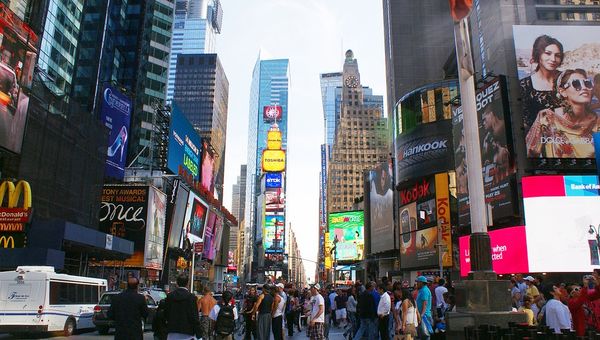 Over the past 10 years, some urban areas in large cities have networked speakers and cameras together over the internet so that people running the security backbone can entice or bother people as they walk through neighborhoods and shopping areas. Although that way of doing things has not proven to be that popular among businesses interested in getting their message out, it has shown many people that if they utilize networked digital signage, which is acceptable to businesses and people, they can create a contiguous narrative that may help sell their product.
Over the past 10 years, some urban areas in large cities have networked speakers and cameras together over the internet so that people running the security backbone can entice or bother people as they walk through neighborhoods and shopping areas. Although that way of doing things has not proven to be that popular among businesses interested in getting their message out, it has shown many people that if they utilize networked digital signage, which is acceptable to businesses and people, they can create a contiguous narrative that may help sell their product.
How Digital Signage Works
At a base level, the signs that are put up these days tend to be large screen televisions modified for all weather conditions if necessary. They can be much larger and they can be smaller. One example of small digital signage is a series of 14-inch monitors placed on the walls of a trolley or light-rail car.
The content or the advertising that is displayed can be a mixture of live television and ads or just advertising wrapped around privately developed content. If you visit McDonald’s in many cities, you will find that their digital signage is sometimes used to broadcast television shows and sometimes strictly provides McDonald’s programming and digital signage advertising. Another major format for digital signage advertising is the slide show, with each advertisement getting several seconds of display time as crowds of people pass by.
Adding a Control Element
In order to be effective with your corporate signage or ad display, someone should have the ability to exercise a great deal of control over the display system. A company, named Navori, is one of the leaders in creating signage system software that allows companies to create a digital signage system from current electronics worldwide. At www.navori.com, they also have systems that are much more sophisticated, allowing vendors to create an advertising display that is synchronized for many different clients.
Ultimately, if you are an advertising agency or a vendor, you can use control software to create a bidding system like the one Google has for its AdWords, with the difference being that you will be able to bid or use different digital signs in the network.
Avoiding Annoying Your Clients
Although it may seem like a win-win situation on the surface, not all clients are receptive to retail areas that have digital signage that is not in tune with the theme that the store has going. When 3D sound first came out, the people who wanted a speaker network used it in Times Square to hit individuals as they walked by to advertise a scary movie or ride. The negative reactions from potential customers were very strong and the entire advertisement went away shortly.
So ensuring that you have a tastefully done advertisement with an effective message can make a large difference. One way that you can get instant feedback from smaller systems is to opt in to using an attached camera that can actually gauge the reaction of passers-by.
By viewing reaction via the camera, it is possible to see how engaging your message is when the users are in front of it. It can also help you to see how useful that particular piece of signage is for your overall campaign.
Statistics are available for digital signage, but technology has only begun to scratch the surface of how consumers react when they come into contact with or watch your advertising. In the future, it should be possible to get a feel for the impressions that your clients have when they view your ad.
Overall, digital signage remains one of the most effective ways of providing corporations control over their media on their own properties. And although it is important to put some time and consideration into the software that you decide to use in order to control it, there are vendors available that can bring you functionality that is years ahead of its time.


